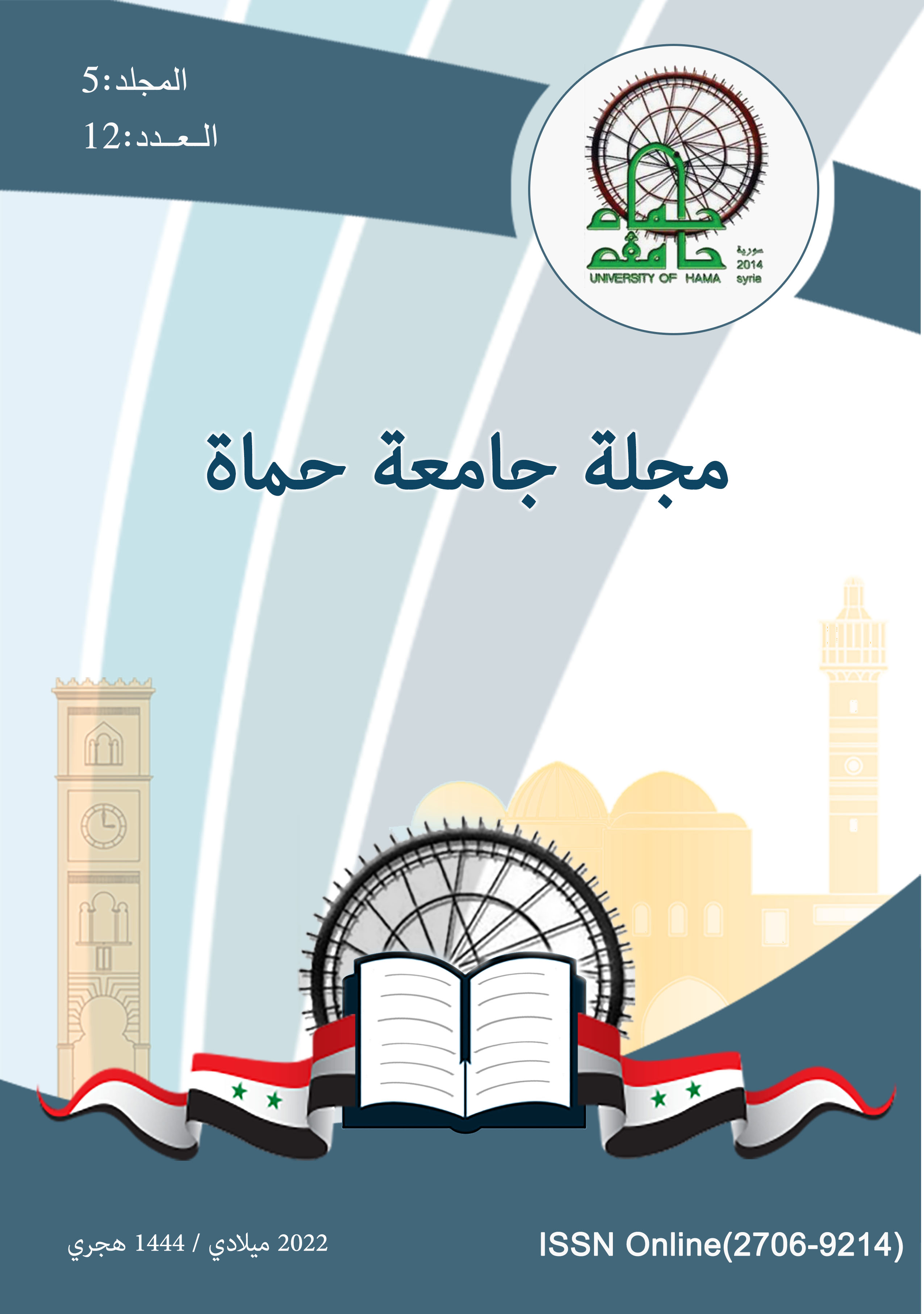دراسة مخبرية مقارنة لتقييم مقاومة الكسر للجسور المؤقّتة المصنوعة بالطريقة غير المباشرة من مادّة PMMA CAD/CAM discs و بالطريقة المباشرة من مادة Bis-acrylic الريزينية.
الملخص
الملخص:
تعتبر التعويضات المرحليّة (المؤقّتة)، جزءاً هامّاً في خطط العلاج التعويضيّة، وتخدِم هذه التعويضات المرحليّة منذ بداية مرحلة التحضير وحتى نهايتها عند تثبيت وإلصاق التعويض الثابت الدائم.
نظراً لأهميّة هذه التعويضات قامت العديد من الدراسات التي تهدف إلى معرفة المادة الأمثل لصناعة هذه التعويضات، وتعتبر راتنجات بولي ميتيل ميتاكريلات Poly methyl methacrylate resins (PMMA)، والراتنجات المركبةComposite-based resins (CBR)، أكثر المواد المستخدمة في صناعة هذه التعويضات المرحليّة (المؤقتة) الثابتة. يعتبر كسر التعويضات المؤقّتة أهم سبب في فشلها سريريّاً، لذلك كانت معرفة الخصائص الميكانيكية للمواد النسية المستخدمة في صنع هذه التعويضات أمراً مهمّاً ويجب عدم إهماله لضمان النجاح السريريّ لها قدر الإمكان.
الهدف من البحث:
يهدف هذا البحث إلى مقارنة وتقييم مقاومة الكسر لكل من مادّتي Polymethyl methacrylate (PMMA)، بالطريقة غير المباشرة بالاستعانة بتقنية CAD/CAM، ومادّة Bis-acrylic، الريزينية المستخدمة بالطريقة المباشرة، والمستخدمتان في صناعة الجسور المؤفّتة المعوّضة عن فقد الرحى الأولى السفلية.
المواد والطرق:
تألفت عينة البحث من /20/ جسراً مؤقتاً تم صنعها على مثال معدني من الكروم كوبالت، يحاكي الأبعاد الوسطية المرجعية للأسنان الدعامات المحضرة(الضاحك الثاني السفلي والرحى الثانية السفلية)، مع منطقة الدمية (الرحى الأولى السفلية) والأسنان المجاورة. تم تقسيمها إلى مجموعتين متساويتين تبعاً للمادة المصنوعة منها الجسور المؤقتة، كما يلي: (المجموعة الأولى: تعويضات بالطريقة غير المباشرة من مادة PMMA CAD/CAM)، (المجموعة الثانية: تعويضات بالطريقة المباشرة من مادة bis-acrylic resin).
تم إخضاعها لاختبار الكسر، ثم إجراء الدراسة الإحصائية على القيم المسجلة.
النتائج:
أظهرت النتائج أن متوسط مقاومة الكسر لمادة PMMA CAD/CAM بالطريقة غير المباشرة، أكبر من متوسط مقاومة الكسر لمادة bis-acrylic resin والمستخدم بالطريقة المباشرة.
المراجع
2-(1976) Mechanics of brittle fracture (Mekhanika khrupkogo razrusheniya). International Journal of Fracture, 12, 785-787.
3-Al-Dwairi, Z. N., K. Y. Tahboub, N. Z. Baba & C. J. Goodacre (2020) A Comparison of the Flexural and Impact Strengths and Flexural Modulus of CAD/CAM and Conventional Heat-Cured Polymethyl Methacrylate (PMMA). Journal of Prosthodontics, 29, 341-349.
4-Anusavice, K. J., C. Shen & H. R. Rawls. 2012. Phillips' science of dental materials. Elsevier Health Sciences.
5-Burns, D. R., D. A. Beck & S. K. Nelson (2003a) A review of selected dental literature on contemporary provisional fixed prosthodontic treatment: report of the Committee on Research in Fixed Prosthodontics of the Academy of Fixed Prosthodontics. The Journal of prosthetic dentistry, 90, 474-497.
6-Cheng, C.-J., C.-L. Lin & Y.-F. Shan (2010) Multifactorial analysis of variables influencing the fracture strength of repair joints for provisional restorative materials using the statistically based Taguchi method. Journal of Dental Sciences, 5, 90-99.
7-Chitmongkolsuk, S., G. Heydecke, C. Stappert & J. Strub (2002) Fracture strength of all-ceramic lithium disilicate and porcelain-fused-to-metal bridges for molar replacement after dynamic loading. The European journal of prosthodontics and restorative dentistry, 10, 15-22.
8-Faruqi, S., K. K. Ganji, V. Bandela, A. K. Nagarajappa, R. N. Mohamed, M. A. Ahmed, M. Farhan, W. N. Alwakid, K. A. S. Al-Hammad & M. K. Alam (2021) Digital assessment of marginal accuracy in ceramic crowns fabricated with different marginal finish line configurations. Journal of Esthetic and Restorative Dentistry, n/a.
9-Goodacre, C. J., W. V. Campagni & S. A. Aquilino (2001) Tooth preparations for complete crowns: an art form based on scientific principles. J Prosthet Dent, 85, 363-76.
10-Gratton, D. G. & S. A. Aquilino (2004a) Interim restorations. Dent Clin North Am, 48, vii, 487-97.
11-Hada, T., M. Kanazawa, M. Iwaki, A. Katheng & S. Minakuchi (2021a) Comparison of Mechanical Properties of PMMA Disks for Digitally Designed Dentures. Polymers, 13, 1745.
12-Kuphasuk, W., N. Ponlasit & C. Harnirattisai (2018) Flexural strengths and color stability of bis-acryl resin materials for provisional restorations. Mahidol Dental Journal, 38, 135-146.
13-Liu, P. R. & M. E. Essig (2008) Panorama of dental CAD/CAM restorative systems. Compend Contin Educ Dent, 29, 482, 484, 486-8 passim.
14-Manappallil, J.J. (2016). Basic dental materials. New Delhi ; Philadelphia: Jaypee Brothers Medical Publishers (P), Ltd.
15-Mei, M. L., S. Y. C. So, H. Li & C. H. Chu (2015) Effect of Heat Treatment on the Physical Properties of Provisional Crowns during Polymerization: An in Vitro Study. Materials (Basel), 8, 1766-1777..
16-Nelson, S.J. and Ash, M.M. (2014). Wheeler’s dental anatomy, physiology, and occlusion. St. Louis, Mo.: Saunders/Elsevier, Repr.
17-Phillips R, Goodacre C, Dykema R. (1992) Modern Practice In Fixed Prosthodontics, Fourth Edition, P77 – 89.
18-Rayyan, M. M., M. Aboushelib, N. M. Sayed, A. Ibrahim & R. Jimbo (2015) Comparison of interim restorations fabricated by CAD/CAM with those fabricated manually. J Prosthet Dent, 114, 414-9.
19-Rosenstiel, S. & M. Land. 2016. Contemporary fixed prosthodontics-e-book. Elsevier Health Sciences.
20-Shillingburg, H. T., S. Hobo, L. D. Whitsett, R. Jacobi & S. Brackett. 1997. Fundamentals of fixed prosthodontics. Quintessence Publishing Company.
21-Thompson, G. A. & Q. Luo (2014) Contribution of postpolymerization conditioning and storage environments to the mechanical properties of three interim restorative materials. The Journal of Prosthetic Dentistry, 112, 638-648.
22-Tom, T., M. Uthappa, K. Sunny, F. Begum, M. Nautiyal & S. Tamore (2016) Provisional restorations: An overview of materials used. Journal of Advanced Clinical & Research Insights, 3, 212-214.
23-Wenceslao González-Viñas and ManciniH.L. (2004). An introduction to materials science. Princeton, N.J.: Princeton University Press.
24-Yanikoğlu, N. D. k., F. Bayindir, D. Kürklü & B. Beşir (2014) Flexural Strength of Temporary Restorative Materials Stored in Different Solutions. Open Journal of Stomatology, Vol.04No.06, 8.
25- Zortuk, M., H. O. Gumus, H. I. Kilinc & A. R. Tuncdemir (2012) Effect of different provisional cement remnant cleaning procedures including Er:YAG laser on shear bond strength of ceramics. J Adv Prosthodont, 4, 192-6.


